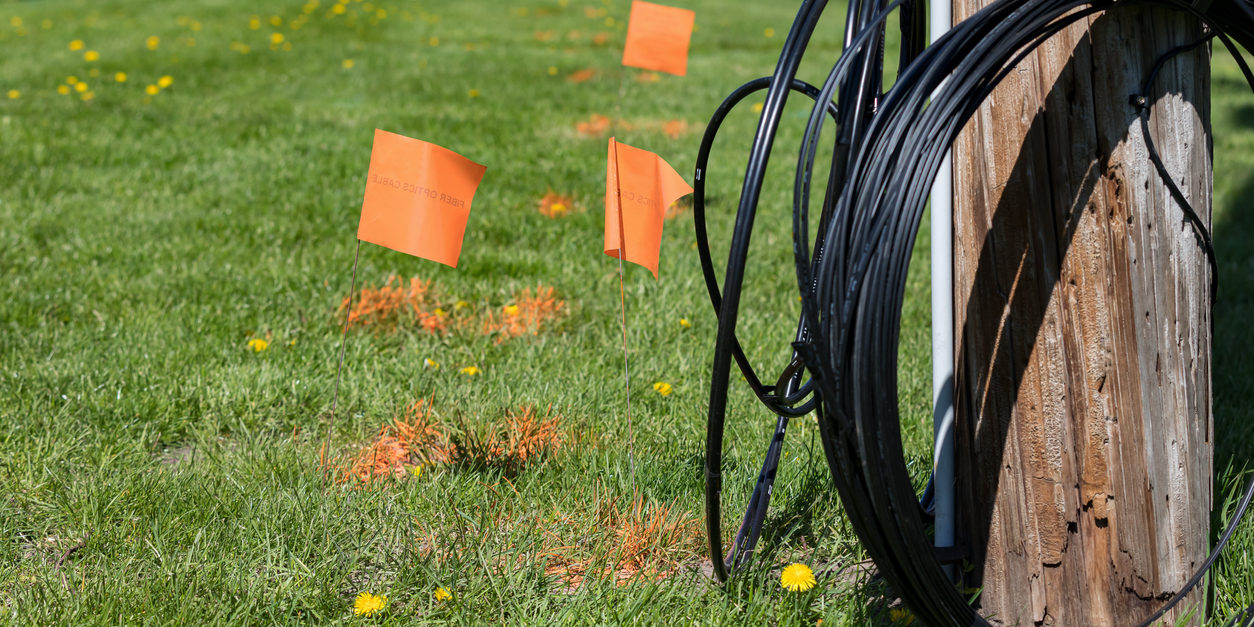When you know your way around a construction site, things go much more smoothly and safely. For those two reasons alone, a carefully and completely marked and flagged job site is the best way to get a construction project started and completed safely and on time!
In this post, let’s look at the proper way to mark and flag a construction site, what the different colors of flags and markers identify, what material makes the best flags and markers, and how to use the flagging system to avoid accidental interruptions in underground utilities.
What Kind of Materials Make the Best Markers and Flags?
A well-thought-out and executed flagging system can certainly get a construction project started on the right foot. But which materials are best for markers and flags to withstand the harsh elements and retain their purpose from start to finish on the job site?
Let’s look at some popular choices for markers and flags and see which materials would be best for your situation.
Wire Staff
By far the most widely used material for marking flags is carbon alloy mild steel wire. These wire staffs can take whatever elements mother nature can throw at them and remain in place and upright.
Wire staffs are easily inserted into the terrain and can take the abuse that a typical job site produces. When your job site demands heavy-duty flags to be used, the ones with wire staffs are the favorite choice.
Plastic Staff
Aside from being tolerant of weather and corrosive material, plastic flagstaffs are an excellent choice. Plastic staffs will not conduct electricity like their wire counterparts and if one accidentally gets into a piece of machinery the plastic flagstaff will break into pieces and cause no damage whereas a wire staff might get twisted around fans and motors.
Fiberglass Staff
If there are going to be drastic changes in temperature or elevation, you might do well with fiberglass for the staff of your marking flag. These staffs are a bit pricey, but their ability to endure the rigors of a job site transitioning from low to high elevations and low to high-temperature swings make them the best flagstaff for the job!
Marking Flag Material
Also important to know how to mark and flag a construction site is using the right material. The right staff for the job needs the suited for the best flag at your job site. Most flags are made from UV-resistant vinyl that can take the heat and cold and hold its color in the sun. Fabric can be used as long it is the proper color for the area where the flag is placed.
Next, we’ll discuss the different colors and their meanings when flagging a construction site.
Flag Colors and Their Meaning
A perfectly constructed flag from the finest material available is simply useless unless it is used in accordance with the American Public Works Association requirements for properly identifying underground utilities.
Here is a list of the different colors and their specific meanings:
- RED FLAGS: A red flag indicates electrical lines, conduit, or lighting cable. Excavators need to tread lightly where red flags are placed to avoid any power outages accidentally caused by digging into a power cable.
- YELLOW FLAGS: Yellow flags indicate underground pipes for natural gas, steam, petroleum, or anything under pressure in a gaseous state.
- ORANGE FLAGS: Indicate the presence of communication lines.
- BLUE FLAGS: Are the color for potable or freshwater.
- PURPLE FLAGS: These are for slurry, irrigation, or reclaimed water.
- GREEN FLAGS: Indicate sewer or drainage facilities.
- WHITE FLAGS: Are placed around the outside perimeter of the job site
- PINK FLAGS: Are used by surveyors as a measurement marker
Knowing the meanings of the colors used in flagging a job site can make a difference in how the job progresses along. Nobody likes to repair or even worse pay for an interrupted power source because the underground line didn’t get properly identified before the excavators started digging.
CALL BEFORE YOU DIG!
You have probably seen these signs in and around job sites to remind everybody involved the importance of calling 811 to have the utility lines identified before the digging starts on any site!
Blackburn Flag is Your Construction Flagging and Marking Solution
Don’t forget to keep plenty of flags and marking tape in your job site toolbox. Knowing how to mark and flag a construction site is pivotal to safety and wellbeing. Blackburn Flag is the industry leader in marking and flagging job sites. Your attention to detail and safety are just a call or click away.
Contact us to let Blackburn Flag show you how easy it is to keep the right flagging material on your job site today!








